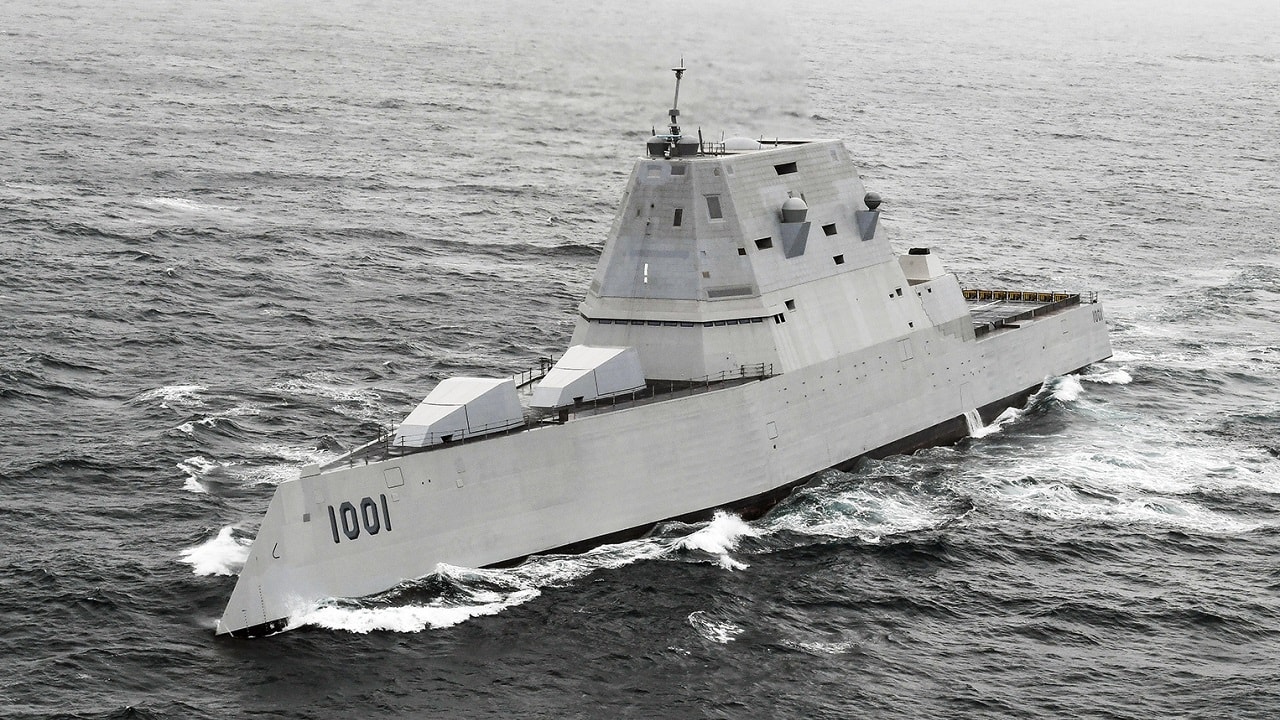For many naval experts, the idea of an expensive stealthy destroyer was nothing more than a fantasy. And while the Zumwalt-class destroyer program has not gone as well as planned, a new plan to arm these vessels with hypersonic missiles could change things for the better: Earlier last month, the U.S. Navy announced that its Navy Strategic Systems Programs had awarded a $22.8 million contract to Lockheed Martin Space Systems to integrate hypersonic weapons aboard the three Zumwalt-class destroyers. The defense contractor will provide missile production long-lead materials, program management, and system engineering for the Navy Conventional Prompt Strike Weapon System Platform-Specific Development and Production project.
In addition, the two massive 155mm Advanced Gun Systems aboard the trio of destroyers – which include the USS Zumwalt (DDG 1000), the USS Michael Monsoor (DDG 1001), and the USS Lyndon B. Johnson (DDG 1002) – will be completely removed. This will supersede a former plan that had called for leaving the AGS in place. It will require significant modification to the three destroyers.
“We are removing the guns, the upper and lower gun rooms. That includes the loading system, the transfer carts, the ammo, etc.,” Capt. Matthew Schroeder, DDG 1000 program manager, Program Executive (PEO) Ships told USNI News earlier this month. “[We’re] going down about five platforms to accommodate the height of the missile, which is significantly larger than other missiles in the inventory.”
When the availability is complete in 2025, USS Zumwalt – which will be the first of the three to undergo the refit – will be armed with the Common Hypersonic Glide Body (C-HGB). The hypersonic missile was developed for use by the U.S. Army, Air Force, and the Navy.
The 16,000-ton Zumwalt-class destroyers will be equipped with at least two sets of missile tubes inserted on the port and starboard sides of the ships. The conventional prompt strike (CPS) concept will extend the long-range strike capability for the U.S. Navy, as the hypersonic missiles would be able to strike nearly any target in the world in less than an hour. However, the focus would remain on attacking high-value, or fleeting targets, with extremely fast hypersonic weapons, which can fly faster than five times the speed of sound.
Refocusing the Mission of the Zumwalt-class
Designed as a new class of multi-mission stealth warships with a focus on land attacks, the sleek Zumwalt-class destroyers were also developed to take on secondary roles including surface and anti-aircraft warfare. The next-generation, multi-mission destroyers are also equipped with a state-of-the-art electric propulsion system, wave-piercing tumblehome hull, stealth design, and the latest warfighting technology and weaponry.
Classed as destroyers, the Zumwalt-class was designed to be larger than any active destroyer or even cruiser but also met the congressional mandate for a warship that has the naval fire support of a battleship. The new warships were further developed to be capable of performing a range of deterrence, power projection, sea control, and command and control missions – and were designed to operate in both the open ocean and near-shore environments.
In addition, the streamlined, wave-piercing tumblehome hull of the warships has a “knife-like profile,” which provides the 600-foot-long vessel with the radar signature of a fishing boat. Despite concerns over the stability of the hull, during testing off the coast of Alaska in 2020, USS Zumwalt handled rough waters as well, and perhaps even better than previous classes of destroyers.
At issue has been exactly how the warships could accomplish their primary mission of land attacks.
As a new generation of warships, the Zumwalt-class was designed to be fitted with two 155mm AGS, which was developed by BAE Systems to be capable of engaging targets with precision-guided shells at a range of up to 60 miles. In wartime, the destroyers could use such an ability to engage targets from close to shore to create a path for an amphibious landing. The problem is that the Long Range Land Attack Projectile, the precision-guided shell to be used in the AGS, ballooned in price from $50,000 to $800,000 for each round – making it simply too expensive to fire.
Changing Course
Originally, 32 of the stealth destroyers were planned – with the $9.6 billion research and development (R&D) costs spread across the whole of the class – but the program was scaled back to 24 warships. Then it was further cut back to seven and finally to just three Zumwalt-class guided-missile destroyers that were produced for the U.S. Navy, bringing the price tag per ship to $7.5 billion including the R&D costs.
As a result, the Navy reverted to building more of the proven Arleigh Burke-class destroyers.
By replacing the AGS with hypersonic missiles, the role of the Zumwalt-class will change, but it may finally have a significant role in the U.S. Navy, and allow the service to successfully reverse course on what was has been seen to be a seriously expensive mistake.
Now a Senior Editor for 1945, Peter Suciu is a Michigan-based writer who has contributed to more than four dozen magazines, newspapers, and websites. He regularly writes about military hardware, and is the author of several books on military headgear including A Gallery of Military Headdress, which is available on Amazon.com. Peter is also a Contributing Writer for Forbes.

